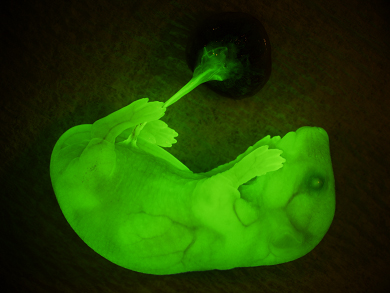| RIKEN Center for Developmental Biology (CDB) 2-2-3 Minatojima minamimachi, Chuo-ku, Kobe 650-0047, Japan |
The cell lines established from the fertilization–failure oocytes expressed the molecular hallmarks of pluripotent cells, such as Oct3/4 and Nanog, and all cells examined were of normal karyotype (meaning their chromosomes were in the appropriate number and arrangement). Even more convincingly, these nuclear transfer ES cells contributed to the development of healthy, fertile offspring, with functional differentiation into both germline and all somatic germ layers. In full-term cloning and intracytoplasmic sperm injection (ICSI) experiments, the AFF oocytes proved to be less amenable than their fresh counterparts, which the authors reckoned might be attributable to defects in genomic reprogramming. A partial deficiency in this mechanism could account for the fertilization-failure egg cells’ ability to generate nuclear transfer ES cells, but not to support full-term development. This subtle but crucial difference could help to answer many of the standing criticisms about the trade-offs involved in dismantling a blastocyst-stage embryo in order to derive ES cells for research, for if the blastocyst is naturally destined never to reach later stages of embryonic development, arguments regarding the sacrifice of individual potential largely become moot. Similar concepts underlie a number of other methods, sometimes referred to as altered nuclear transfer, in which the embryo is genetically engineered to prevent its development into an individual, while allowing it to grow to the blastocyst stage. “What’s important about this demonstration is that it shows that even aged oocytes that failed to fertilize on an initial attempt can be used to generate ES cells, which are extremely useful in basic research and show great future promise in medical applications,” says Wakayama. “While past attempts to use fertilization-failed human oocytes have been unsuccessful, we hope that this work shows that that may have been due to the nuclear transfer technique, rather than any inherent biological deficiency.” |
|||||
|
|||||
 |
| Copyright (C) CENTER FOR DEVELOPMENTAL BIOLOGY All rights reserved. |
